Machinery Milestones: Centenary for iconic Lanz Bulldog
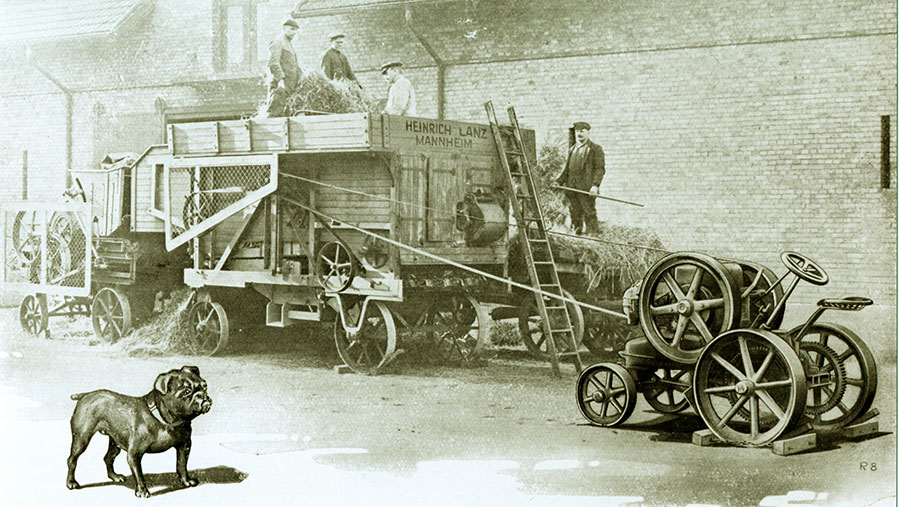 An early 1920s picture showing a Lanz threshing machine powered by a Lanz Bulldog tractor and watched by a bulldog
An early 1920s picture showing a Lanz threshing machine powered by a Lanz Bulldog tractor and watched by a bulldog The introduction of the Lanz company’s first Bulldog series tractors 100 years ago set the wheels in motion for one of the European tractor industry’s biggest success stories.
Tractor history began in America in the 1880s and 1890s, followed soon by several British pioneers, but development in mainland Europe progressed more slowly.
Most arrived after the First World War ended in 1918, including the German-made Bulldog that first appeared in 1921 and remained popular for more than 30 years.
Lanz history dates back to 1859, when Heinrich Lanz joined his father’s trading business, and it was probably his influence that persuaded the company to expand into engineering work a year later.
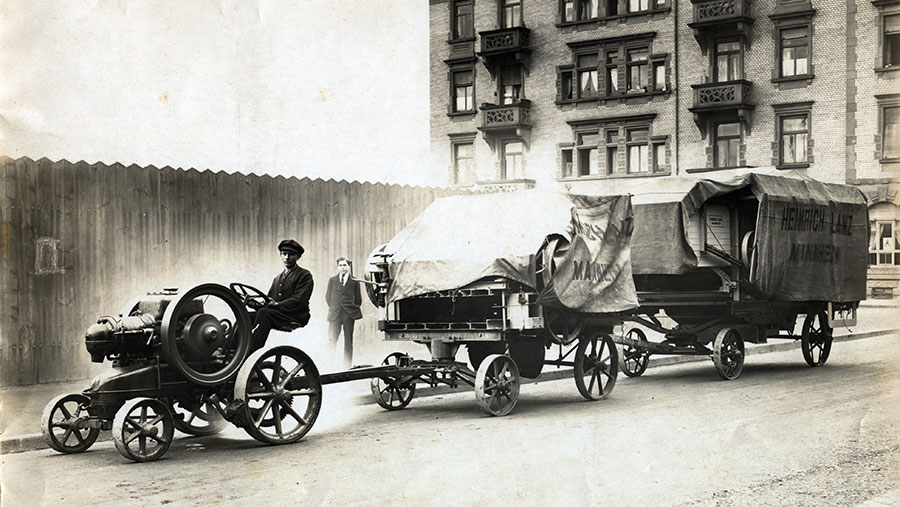
A publicity picture from the early 1920s showing a Lanz Bulldog tractor delivering threshing equipment
The engineering activity, based mainly on farm machinery manufacturing, increased rapidly and Lanz also imported Fowler steam engines and other equipment from Britain.
Mr Lanz left the family business in 1870 to run his own engineering company, based at Mannheim, and during the 1890s this had become Germany’s biggest farm machinery company.
Tractor development at Lanz began in 1912 with what appears to have been an ambitious and technically advanced tractor plus a powered cultivator combination, but this was abandoned during the 1914-18 war.
The replacement was the HL Bulldog, with HL standing for Heinrich Lanz, and it was much more basic than the company’s previous project.

Stopping power on the Bulldog was provided by a brake pad pressed against the rim of each rear wheel solid rubber tyre
Single-cylinder engine
The Bulldog’s power was developed by a single horizontal cylinder which operated on the hot bulb principle.
This was at a time when the majority of American and British manufacturers had switched to multiple cylinders because of the smoother operation, improved flexibility and many other benefits.
The hot bulb was also more time-consuming to start from cold as a blow-lamp was required to heat part of the cylinder head to enable combustion to begin.
One of the potential disadvantages of the new Lanz tractor was its lack of versatility.
Though it was a popular choice for powering belt-driven stationary equipment such as threshing machines, and was also used for general haulage, field work – particularly ploughing and cultivating – was restricted by the small wheel diameter and lack of ground clearance.
Other significant limitations of the first Bulldog models were their modest 12hp engine output and a transmission that provided only a single forward speed.
Reverse was available through a complicated process that involved stopping the engine and then restarting it in the opposite rotation direction to make the tractor travel backwards.
The exposed chain and sprocket drive to the rear wheels was another HL Bulldog design feature that became outdated during the early 1920s.
The stopping system may also have failed to inspire confidence when pulling a heavy load on a steep slope in wet conditions.
The Bulldog’s brakes consisted of pads pressed against the outer rim of each rear wheel, but stopping power was still low on the priority list for most tractor companies – in fact, the HL system was certainly not the worst example.
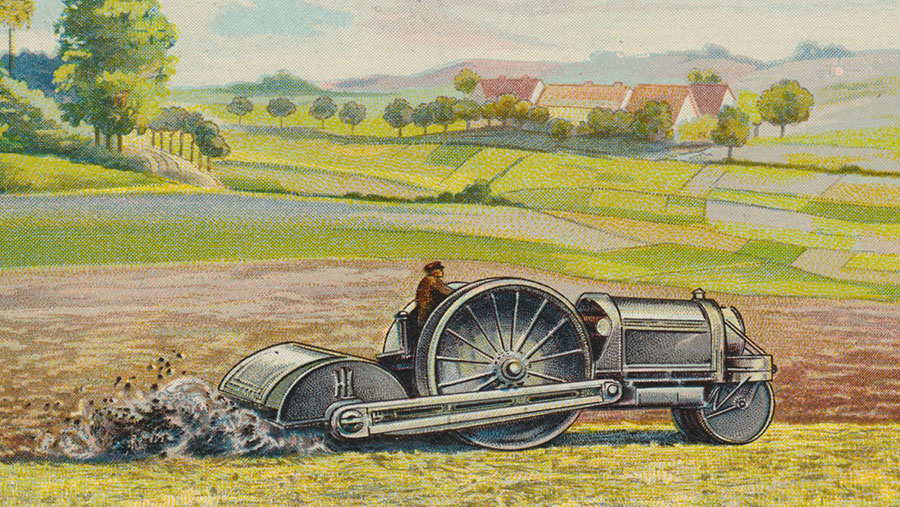
An artist’s impression of the advanced Lanz tractor and cultivator project that was abandoned during World War 1
Simple design
The basic, no-frills design suited the needs of many farmers in Germany and other countries recovering from wartime devastation.
A single-cylinder engine has fewer working parts to cause problems and the hot bulb’s ability to run on virtually any inflammable liquid was an attraction at a time when fuel supplies were still erratic and prices were variable.
It was a popular choice and sales totalled more than 6,000 by the time it was replaced in 1929.
This was a good result for a non-American tractor company in the 1920s, but it was just the start of Lanz’s success, with the production total for all Bulldog series models reaching more than 200,000 by the early 1950s.
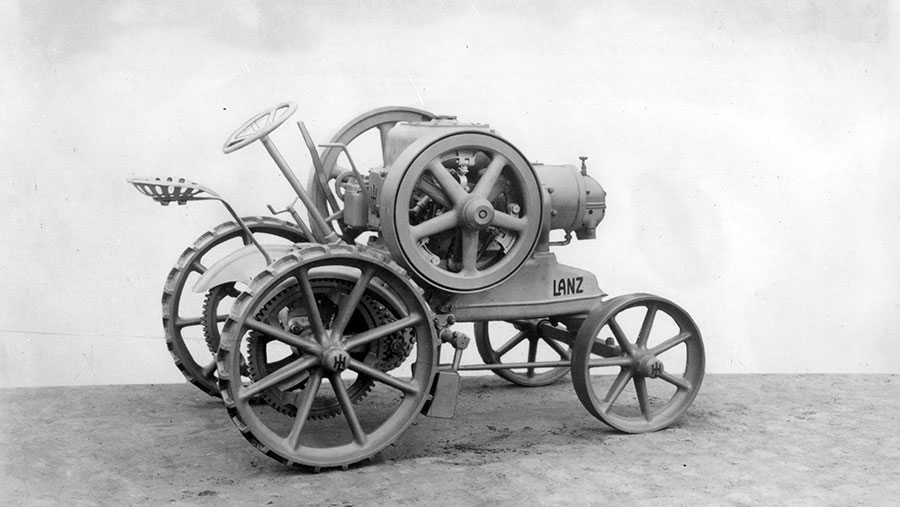
The HL Bulldog arrived in 1921 to start the Lanz tractor success story
One of the surprise features of the tractor was the peculiarly British “Bulldog” name. Production started in 1921, just three years after Britain and Germany, and their allies, ended the war that had caused huge economic and social damage in much of Europe.
The Bulldog moniker, with its British associations, was an unexpected choice for a tractor with Germany as its principal market, and the official explanation for the choice of name was that the front end of the hot bulb engine resembled a bulldog’s head.
The tractor’s popularity indicates this was not a barrier to sales, and the fact that Lanz chose to continue using the name through virtually the whole of its production run suggests that it was regarded as an asset rather than a hinderance.
A growing range
As well as retaining the Bulldog name, Lanz also continued to use its hot-bulb engine to power future tractors, helping to establish a trend that others followed.
The long list of hot-bulb tractor manufacturers soon included many of the leading European companies, and small numbers were also built in Australia following the popularity of some imported Lanz tractors.
Local production included the KL Bulldog based on a 40hp Lanz Bulldog design, and the McDonald company-built hot-bulb tractors during the 1930s and 1940s.
The HL Bulldog was the model that established Lanz in the tractor market, but it was soon followed by more technically advanced machines. The first of these, arriving in 1923, was the HP Bulldog.
It used the HL engine, but was years ahead of its time, with a specification that featured four-wheel drive through large-diameter wheels front and rear, and it was probably the first production tractor with articulated steering.
Additional Bulldog models followed offering increased engine power and featuring up-to-date enclosed transmissions with a choice of gear ratios, and there was also a successful range of tracklaying models.
The Eil Bulldogs were probably the most technically advanced series of Lanz tractors, and they would have been the preferred choice among drivers.
Built for transport and available in various guises from 1936, Eil Bulldog specifications usually included a fully padded bench seat for the driver and a passenger, a full cab or fold-down weather protection and, in some cases, a transmission with up to six forward gears and roughly 27kph top speed.
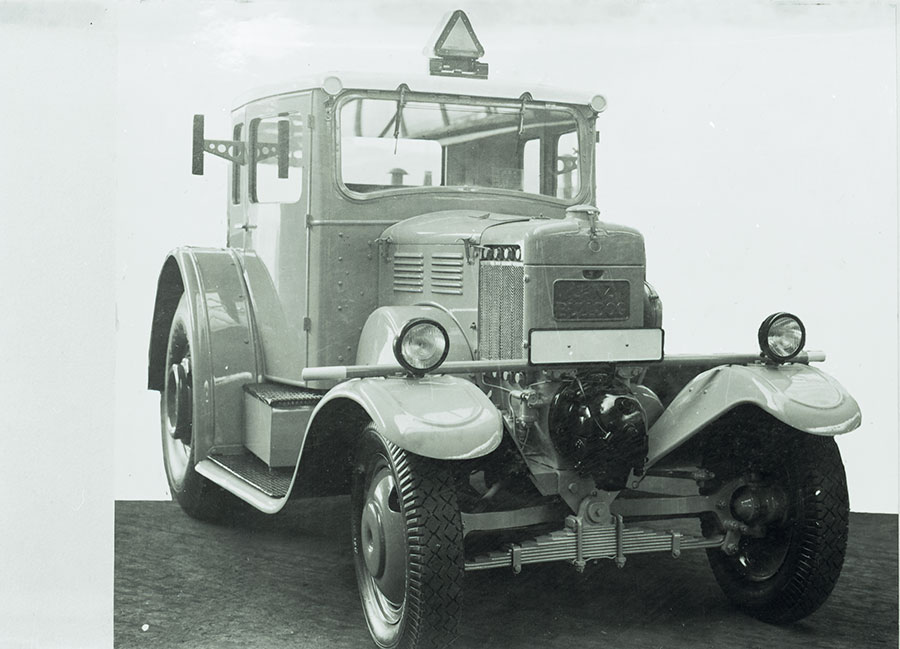
This 1936 Lanz Eil Bulldog was one of the most advanced tractors, featuring a cab with padded seats for two, front axle suspension and inflatable tyres
End of the line
The end of the road for Lanz tractor production came in the 1950s, and some enthusiasts claim it was the result of the decision to abandon the hot-bulb engine that had become a Lanz trademark.
The switch to multi-cylinder diesel power was completed by 1955, at a time when John Deere was planning to establish a European manufacturing base.
The first choice for the Deere company was to open a factory in the UK, following the example of Ford, IH, Allis-Chalmers, Massey-Harris and others, but instead it made an offer to buy the Lanz factory at Mannheim in a deal completed in 1960.
The Lanz brand name on new tractors was phased out and had disappeared by 1965 as John Deere’s new European success story was starting.
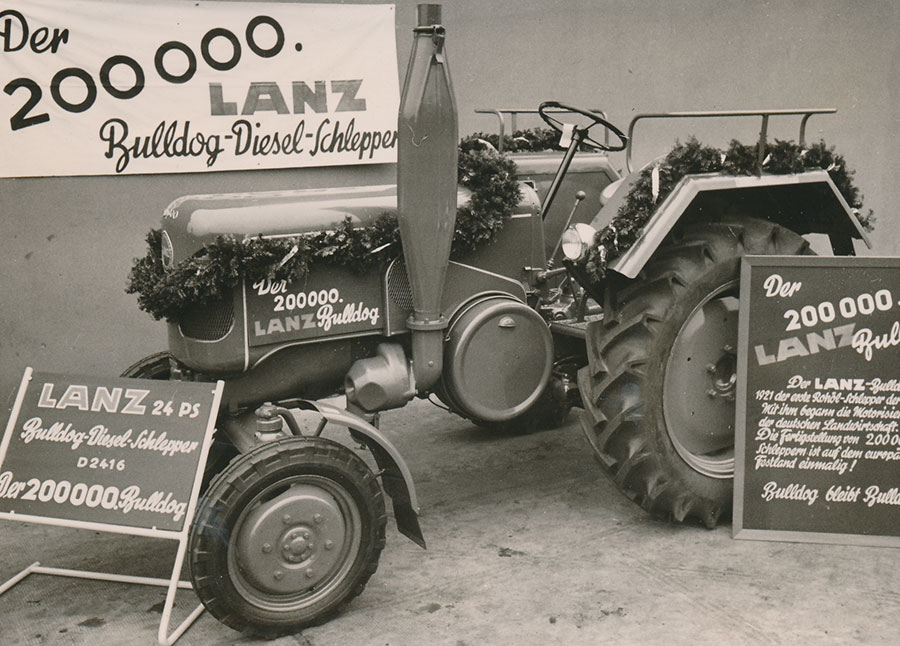
Lanz held a special celebration in 1956 when the 200,000th Bulldog tractor came off the production line

